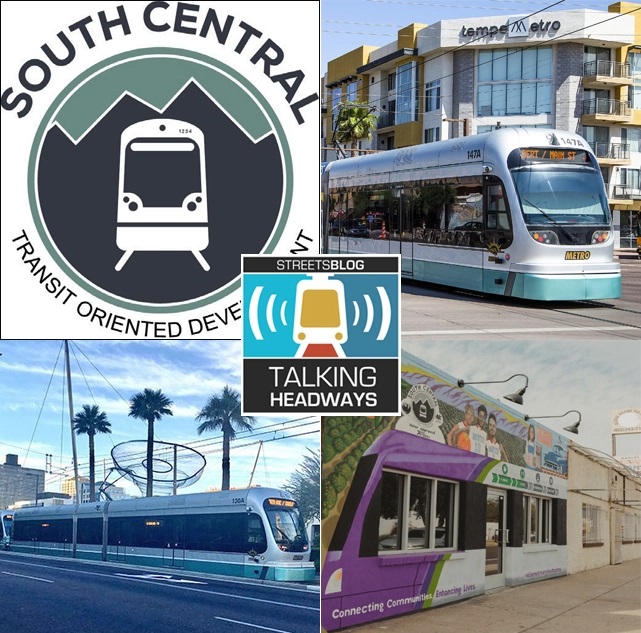This week, we’re merely flies on the wall of a one-on-one conversation between Phoenix city planner Elias Valencia and community champion Victor Vidales as they talk about creating the South Central Transit-Oriented Development Community Plan and what it takes to create strategies that empower neighborhoods and reduce displacement.
Here's the podcast player. If you want to read rather than hear, scroll down for the edited transcript. If you want a full unedited transcript (with typos!), click here:
Here's the partial transcript:
Elias Valencia: You’ve been involved with a lot of groups that are maintaining and collaborating on what the plan has called for. You helped co-found the So-Co convening neighborhood group, then the South-Central Collaborative, and you’re also on the South-Central construction advisory board. Can you expand on those?
Victor Vidales: Yeah. I mean, they’re all really connected because, you know going through the initial design of, and being impacted by, the light rail, we decided to collaborate with our neighbors to the north, central city south, and the warehouse district to say that, "Hey, if we come together, we’ll have a stronger voice in advocating for what we really believe this light rail should be and how it should serve us." It should be a connector and not a divider. And part of that, some of the initial wins that we received was, going through the planning process with the design team of AECOM and Valley Metro and the City of Phoenix.
And before some of those groups were selected, the primes, like AECOM, we were able to work with the City of Phoenix and Valley Metro in saying that there’s this financial benefit that comes from investing in the light rail and these multinational companies come in and this is what they do. And they’re very good at it. And we said, "Well, how could we benefit from that? And how could we create language in these RFPs to create a local benefit, a local preference in supporting workforce development?" And some of the things that we did was create a workforce development program in both the design and the construction contract.
And I remember when we got that language approved by the City of Phoenix and Valley Metro, it was such a big win for the community. And then there was the artist piece that they decided to separate out. And, you know, we were not going to allow that to just go to the national level, but we said, "You know what? We want the same language that we put in the RFPs for the design and the construction contracts to also be in the artist selection process." And so we created the language, it got adopted by Valley Metro and the City of Phoenix, and we were able to select 10 of the 15 artists to be local artists. And that’s $3 million of contracts that were able to stay local.
And not only was it, you know, wealth-building, it also created new skill sets for artists that didn’t necessarily have the experience to do public art. And so now these artists are going to have opportunities all across the country and all across the globe because they now understand the process of public art and what it means to do that type of work.
So, yeah, those neighborhood groups and those community groups coming together, really having these conversations, start to find pathways, to carve out opportunities for light rail to benefit people now during the process. And the same thing with the construction getting workforce development so that we had a workforce that is not just transient anymore, where you’re just pulling people from light rail projects from city to city to city, but actually empowering and educating people to have that skill set here locally, so they can continue to build light rail throughout the City of Phoenix.
So yeah, those, those were some of the victories that the South-Central Collaborative was able to initiate and implement in benefiting the community.







